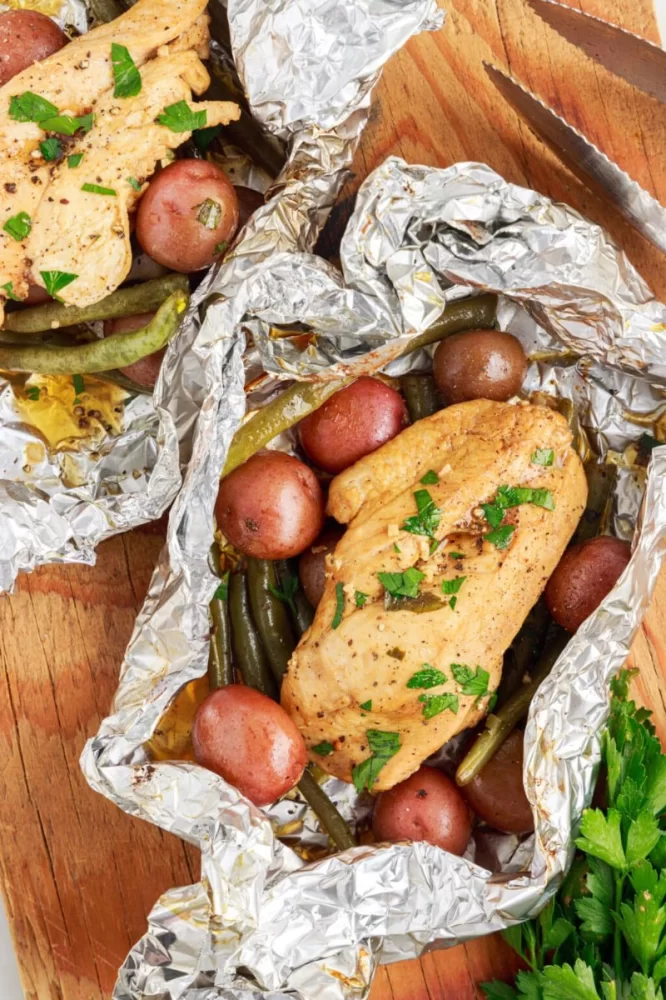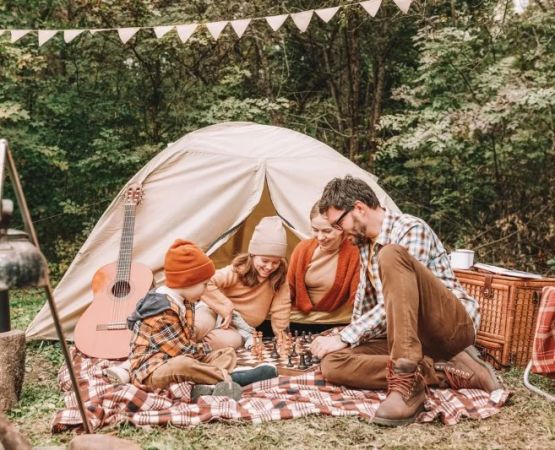- 1 - Why Foil Packet Chicken Dinners Are Perfect for Campfires
- 2 - Basic Preparation Steps for Foil Packet Chicken
- 3 - Flavor Combinations That Elevate Campfire Chicken
- 4 - Cooking Techniques for the Best Results
- 5 - Real Experiences from Campers
- 6 - Perfect Sides and Pairings for Foil Packet Chicken
- 7 - Safety and Practical Tips for Campfire Cooking
- 8 - Why Foil Packet Dinners Become Camping Traditions
1. Why Foil Packet Chicken Dinners Are Perfect for Campfires
Campfire foil packet chicken dinners are a staple of outdoor cooking because they are convenient, delicious, and customizable. Unlike grilling or frying, foil packets allow flavors to blend together while keeping the meat juicy and tender. Campers love this method because it requires minimal cleanup, an essential factor when you’re in nature. Foil packets also keep meals portioned, which makes it easier to cook for groups without worrying about uneven servings. Whether you’re a seasoned camper or a beginner, this style of cooking simplifies the entire process.
2. Basic Preparation Steps for Foil Packet Chicken
Creating the perfect foil packet chicken dinner begins with proper preparation. Start with heavy-duty aluminum foil to prevent tearing. Place chicken breasts or thighs in the center and season generously with salt, pepper, and herbs. Add vegetables like bell peppers, zucchini, or potatoes for flavor and nutrition. To prevent sticking, drizzle a small amount of olive oil before sealing. Folding the foil correctly is key: create tight edges to lock in steam while leaving enough room inside for circulation. At Pine Cliff Resort, campers often prepare packets in advance to save time and enjoy more of the outdoors.
3. Flavor Combinations That Elevate Campfire Chicken
One of the best aspects of foil packet dinners is experimenting with flavors. For a classic taste, combine chicken with garlic, rosemary, and lemon slices. Those who prefer bold flavors might try barbecue sauce, onions, and corn. A Mediterranean twist could include olives, cherry tomatoes, and feta cheese. For spice lovers, adding jalapeños and Cajun seasoning creates a smoky kick. These variations ensure that every camper, no matter their taste, can enjoy a satisfying meal by the fire.
4. Cooking Techniques for the Best Results
Cooking foil packets over a campfire requires attention to timing and heat. Place the packets on hot coals rather than directly in the flames to avoid burning. Rotate them occasionally to ensure even cooking. Chicken typically cooks in 20–30 minutes, depending on thickness and ingredients. A meat thermometer is a handy tool for confirming doneness, with 165°F being the safe internal temperature for chicken. Some campers use a grate over the fire for easier handling. The technique may take practice, but once mastered, it guarantees consistent results.
5. Real Experiences from Campers
Many campers share stories of how foil packet chicken dinners became their most memorable meals. One family at Pine Cliff Resort recalled cooking packets filled with honey mustard chicken and sweet potatoes—the kids declared it the “best camping meal ever.” Another camper described how they improvised with leftover vegetables and still ended up with a flavorful dish that rivaled a restaurant meal. These experiences highlight the flexibility and joy of campfire cooking, where creativity meets practicality.
6. Perfect Sides and Pairings for Foil Packet Chicken
While the chicken and vegetables provide a filling meal, adding sides enhances the experience. Campers often serve foil packet dinners with crusty bread or cornbread to soak up the juices. A fresh salad balances the warmth of the cooked dish, and roasted marshmallows or s’mores create a classic camping dessert. Beverages like hot cocoa, cider, or even a simple lemonade can complement the savory flavors. These pairings turn a campfire dinner into a full dining experience in the great outdoors.
7. Safety and Practical Tips for Campfire Cooking
Safety is a critical part of campfire cooking. Always use heat-resistant gloves or tongs when handling hot foil packets. Place the fire in a designated pit and keep water or sand nearby in case of emergencies. Campers should also avoid overcrowding the fire with too many packets at once, which can reduce cooking efficiency. Preparing a few extra packets as backups is a good idea, especially if cooking for larger groups. At Pine Cliff Resort, staff often remind visitors to respect fire safety rules while still enjoying the fun of campfire dining.
8. Why Foil Packet Dinners Become Camping Traditions
Over time, campfire foil packet chicken dinners become more than just meals—they turn into traditions. Families return year after year to recreate the same recipes, sometimes tweaking flavors but always cherishing the shared experience. Friends bond over preparing, cooking, and tasting together under the stars. The simplicity, combined with the sense of accomplishment, makes these dinners unforgettable. For many, this style of cooking defines what it means to camp: connecting with nature while enjoying food that is both hearty and delicious.







